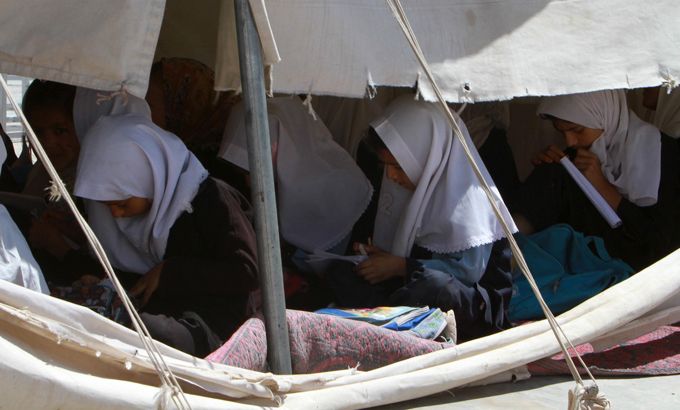Rural Herat’s revolution in girls’ education
Even before the Taliban ruled Afghanistan, few women in Pashtun Zarghun received schooling – now, all that is changing.

Only one girl in the district of Pashtun Zarghun, in Herat province, had ever graduated from school before the year 2009. And she finished her studies during the reign of Afghanistan’s first president, Mohammed Daoud Khan, in the mid-1970s.
In recent years, however, this rural district has seen a dramatic shift in female education, with 16,000 girls now enrolled in school.
Keep reading
list of 4 itemsThirty years waiting for a house: South Africa’s ‘backyard’ dwellers
Photos: Malnutrition threatens future Afghan generations
From prisoner to president in 20 days, Senegal’s Diomaye Faye takes office
Many of the female pupils, who comprise more than 40 per cent of the district’s 37,000-strong student body, say the effects of three decades of conflict have led to shifts in long-standing traditions.
| Afghan education |
 |
|
Total schools grade 1-12: 12,740 |
| Primary and secondary students: 7.3m (fewer than 1m during Taliban rule) Girls: 2.4m Boys: 4.6m |
| School-age children still uneducated: 4.2m – 40 per cent of which are girls |
| Total adult literacy rate: 39 per cent Female literacy: 13 per cent |
| Number of districts with no girls in grades 10-12: 200 |
| Source: Unicef, CIA World Factbook |
“When [my mother and father] were supposed to be studying, there were no schools, nowhere to learn. So when we grew up our parents thought about us. That’s why they sent us to school,” said Azita Sahib Shahi.
This dramatic advance, however, has not been without its challenges.
With more girls being educated than ever before, the resource strain created by underinvestment – both by the government and foreign donors – in rural areas such as Pashtun Zarghun, becomes plaintively apparent.
Hundreds of girls huddle in tents used as overflow classrooms, where six students convene around benches made for only two people.
There is also a severe shortage of qualified teachers.
When combined with the push to send girls to schools, the lack of educators has created a ratio of 57 students to every one teacher in Pashtun Zarghun.
Herat province recently asked the ministry of education in Kabul for an additional 2,000 teachers – but received only 700.
This leaves Pashtun Zarghun short of 170 teachers, says Mohammed Daoud, district head of education.
Of Pashtun Zarghun’s 647 teachers, just 100 are women, showing a dire need for qualified female educators, something that still keeps thousands of girls throughout the central Herat district away from school.
The need for female teachers highlights the cultural difficulties, that, despite startling gains, still keep many girls from completing their education.
Though the 30 girls in the twelfth grade this year represent a nearly two-fold increase since 2009 – when 17 female students graduated – it is still a fraction of the 1,200 who should be preparing to take their college entrance exams.
Most girls are pulled out of school, by their parents, when they reach puberty at around age 14.
Still, even with these financial and cultural constraints, Pashtun Zarghun has made great strides in its “revolution of education”, says Daoud.
And these advancements were made possible in such a short period of time, came despite the district seeing very little of the the billions of dollars in foreign aid that have flowed into Afghanistan over the past 11 years.